Waterloo brothers' namesake ship in combat for first time on Mideast tour
USS The Sullivans fought Houthis in Yemen, destroyed Iran missiles shot at Israel
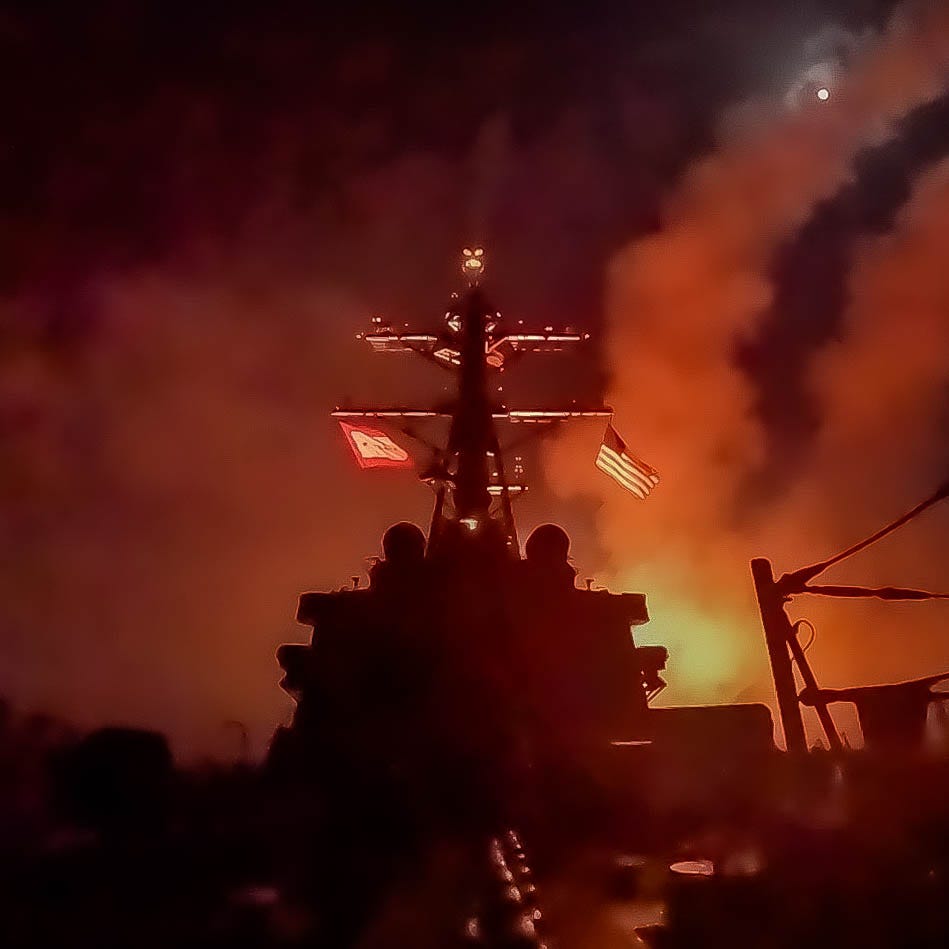
WATERLOO — The U.S. Navy ship named for five Waterloo brothers who died together during World War II has seen its first combat in the ship’s 28-year history.
The USS The Sullivans, hull number DDG-68, earned a combat action ribbon from the Navy after a recently completed 8 1/2-month deployment, the ship’s fifth overseas deployment since 2020.
The Sullivans, an Arleigh Burke-class guided missile destroyer based in Mayport, Fla., participated in missile strikes against Houthi combatants in Yemen who were launching their own ordnance in an attempt to disrupt shipping in the Bab-al-Mandab Strait, a 20-mile-wide passage at the south end of the Red Sea, connecting it with the Gulf of Aden and the Indian Ocean.
The Sullivans also were dispatched to the eastern Mediterranean Sea, where the ship shot down missiles Iran fired at Israel in June.
It is the first combat for the ship named for George, Madison, Joseph, Madison and Albert Sullivan of Waterloo since it was commissioned into Navy service at Stapleton Pier, Staten Island N.Y. in April 1997. The ship, which returned to Mayport in July, has had multiple overseas deployments throughout its service, including a world tour attached to the British Royal Navy and the aircraft carrier HMS Queen Elizabeth in 2021.
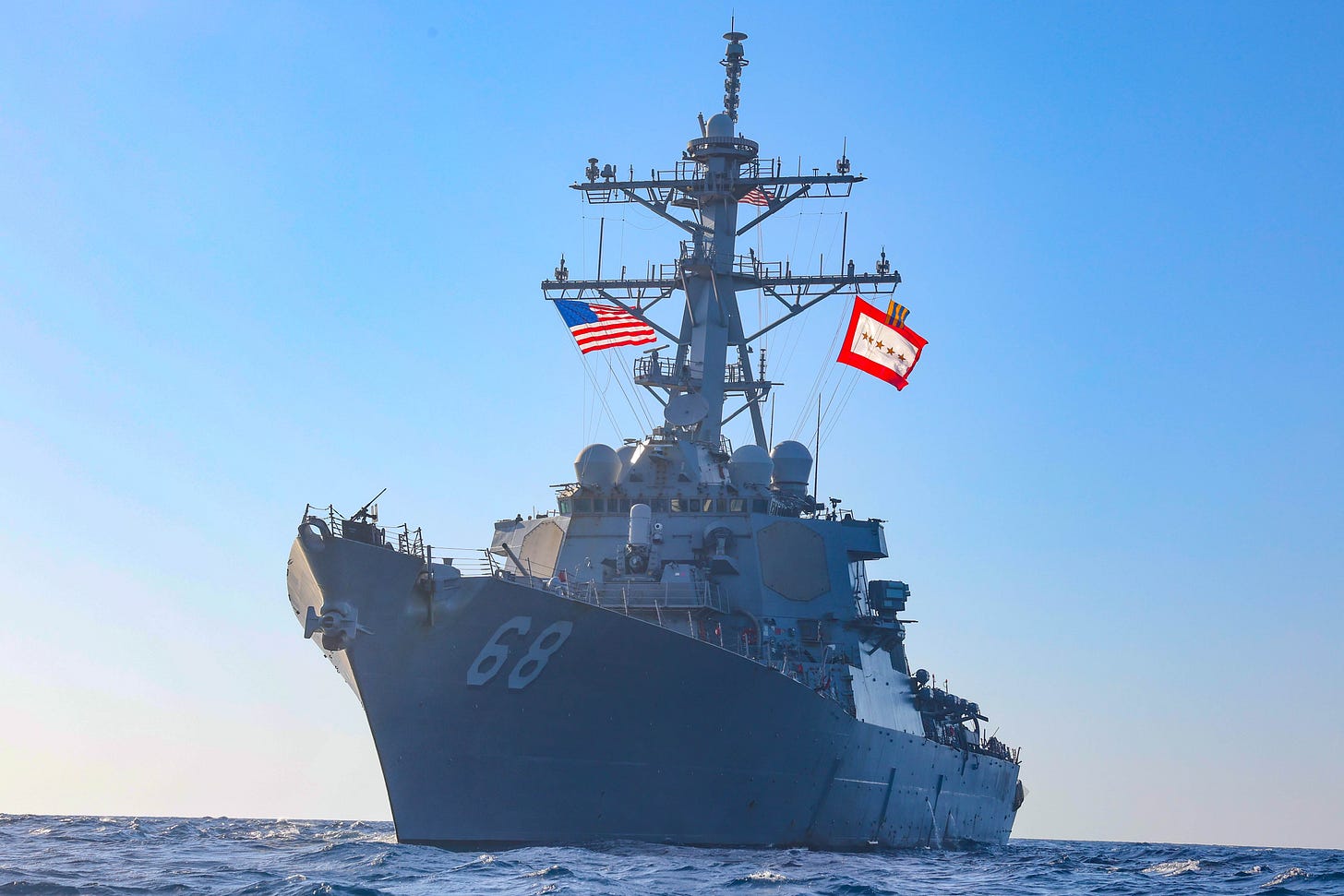
For the ship’s commanding officer, U.S. Navy Cmdr. Mathew Rechkemmer, a Navy ROTC graduate of Iowa State University, it was his first combat in his 18 years on the Navy. Half of his sea duty has been on the USS The Sullivans, in multiple tours, as well as other ships. He chose the Sullivans for his first sea duty assignment upon joining the Navy after graduating from Iowa State.
In this most recent deployment, as well as others he served on the ship, he said the crew of about 300 sailors held true to the vessel’s motto passed down from its namesake brothers: “We Stick Together.” He spoke from the ship via Zoom and the interview was recorded as an oral history for Waterloo’s Grout Museum District and the Sullivan Brothers Iowa Veterans Museum.

While a number of “Sully sailors” have hailed from Iowa, ISU-educated Rechkemmer is the ship’s first commanding officer with Iowa ties, according to Kelly Sullivan, the official Navy sponsor of the ship and the granddaughter and grandniece of the Sullivan brothers. She has been extensively involved with the ship from its 1995 christening.
Rechkemmer, the son of a Chicago NorthWestern Railroad employee, was born in St. Charles, Ill. near Chicago and from age seven grew up in Papillion, Neb., just south of Omaha, 50 miles from Lincoln and near Offutt Air Force Base where Strategic Air Command headquarters of the U.S. Air Force in located.
He chose to be a sailor and a Cyclone instead of an airman and a Cornhusker.
His family, when living near Chicago, boated at the lakes in Wisconsin. “They’re typical Midwest lake boaters,” he said. “All my friends growing up were Air Force brats, but my love of boating and being out on the lake kind of made me want to go Navy.”
He briefly bought into the lure of Husker football but wanted to go to college a little further from home.
“Iowa State had the ROTC program I was looking for,” he said. “I did one campus visit and fell in love with it. No regrets at all; it was a great experience.” It was there he met his wife of 17 years from Wayland in Henry Count near Mount Pleasant in southeast Iowa.
He graduated and was commissioned into the Navy Aug. 4, 2007.
“My first duty assignment was actually right here on the USS The Sullivans,” he said. “I moved down to Jacksonville (Fla.) and reported on board the Sullivans as a first-tour division officer and an ensign by rank.” He served 2 1/2 years on the ship and one seven-month overseas deployment in 2008-09.
“I knew I was going to pick The Sullivans. I wanted to pick The Sullivans,” Rechkemmer said. “I wanted to go to Florida and I looked at the different ships and the slots available on them. I thought it would be kind of cool to go to a ship that had a connection to the state that I was graduating from. I knew the story — and was excited when I was able to pick the ship.”
This is his third tour of duty on the Sullivans. The first was as an ensign, the second as the ship’s executive officer, and then back as captain of the ship.
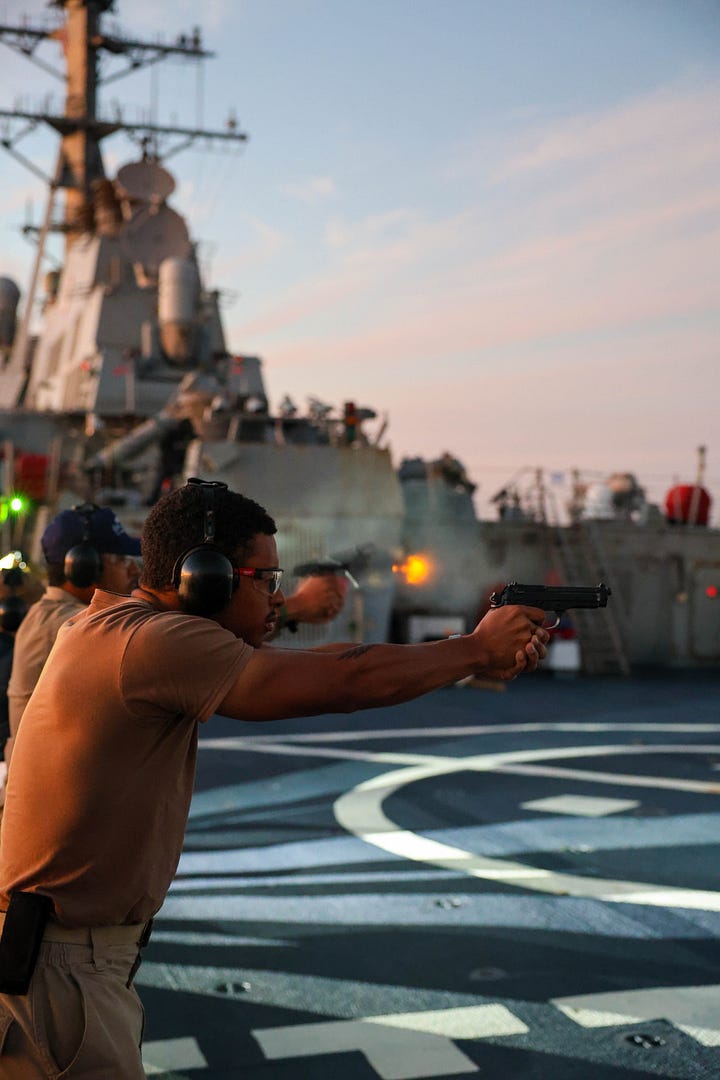
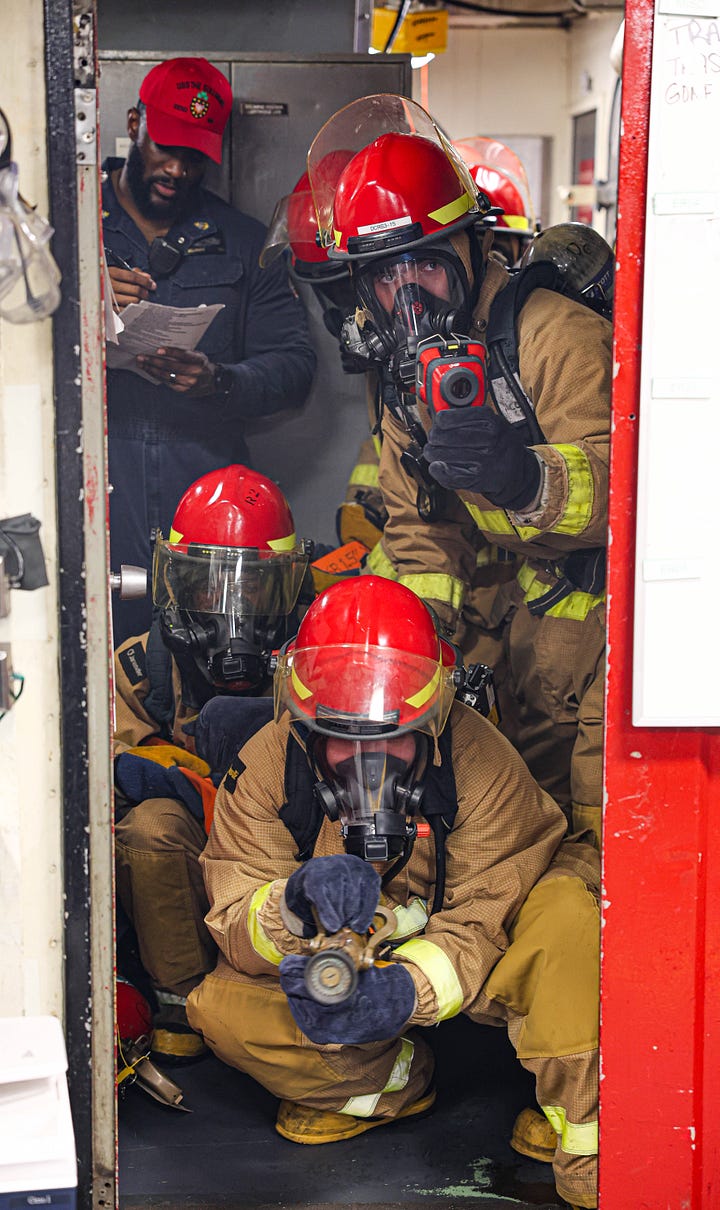
“When said and done, about 50 percent of my time aboard ships will be aboard The Sullivans,” he said, serving with a smattering of sailors with Iowa or Midwestern ties.
It’s “a bit abnormal” for a ship to have five deployments in five years as the Sullivans has, he said. However, “it’s becoming more common that ships are going on ‘surge’ deployments of shorter duration to help complete a given mission.”
During The Sullivans 2021 deployment, with Royal Navy forces, “she was the only U.S. Navy ship attached to that strike group, and they went all the way to the western Pacific and back.” It happened again during his time as the ship’s executive officer.
On both occasions, the sailors were able to visit The Sullivans School in Yokosuka, Japan, also nameed for the brothers. It’s a U.S. Department of Defense accredited school serving children of active-duty military personnel and Defense Department civilians.
Visiting that school that shares a namesake with the ship “was real special to me,” Rechkemmer said.
Shortly after returning from the 2021 deployment with the Royal Navy, the ship was deployed again from February-May 2022 after Russia invaded Ukraine, “up in the Baltic and the Mediterranean in case that conflict expanded outside the borders of Russia and Ukraine,” Rechkemmer said.
After that tour, some crew members came to Waterloo in August 2022 to attend the city’s annual Iowa Irish Fest celebration. Rechkemmer was assigned to Strategic Command at Offutt near Omaha at that time and joined other crew members in Waterloo as the ship’s incoming executive officer.
The Sullivans was deployed again from fall 2022 through the winter of 2023. Then in December 2023, the ship was deployed back to the Middle East when the Israel - Hamas war heated up. It was a previously unscheduled deployment.
“We quickly got the ship ready, got the ammo loaded back onto the ship and made as many repairs as we could,” Rechkemmer said. The ship was sent to the eastern Mediterranean Sea near the island of Crete, joining with the carrier USS Gerald R. Ford strike group for two months.
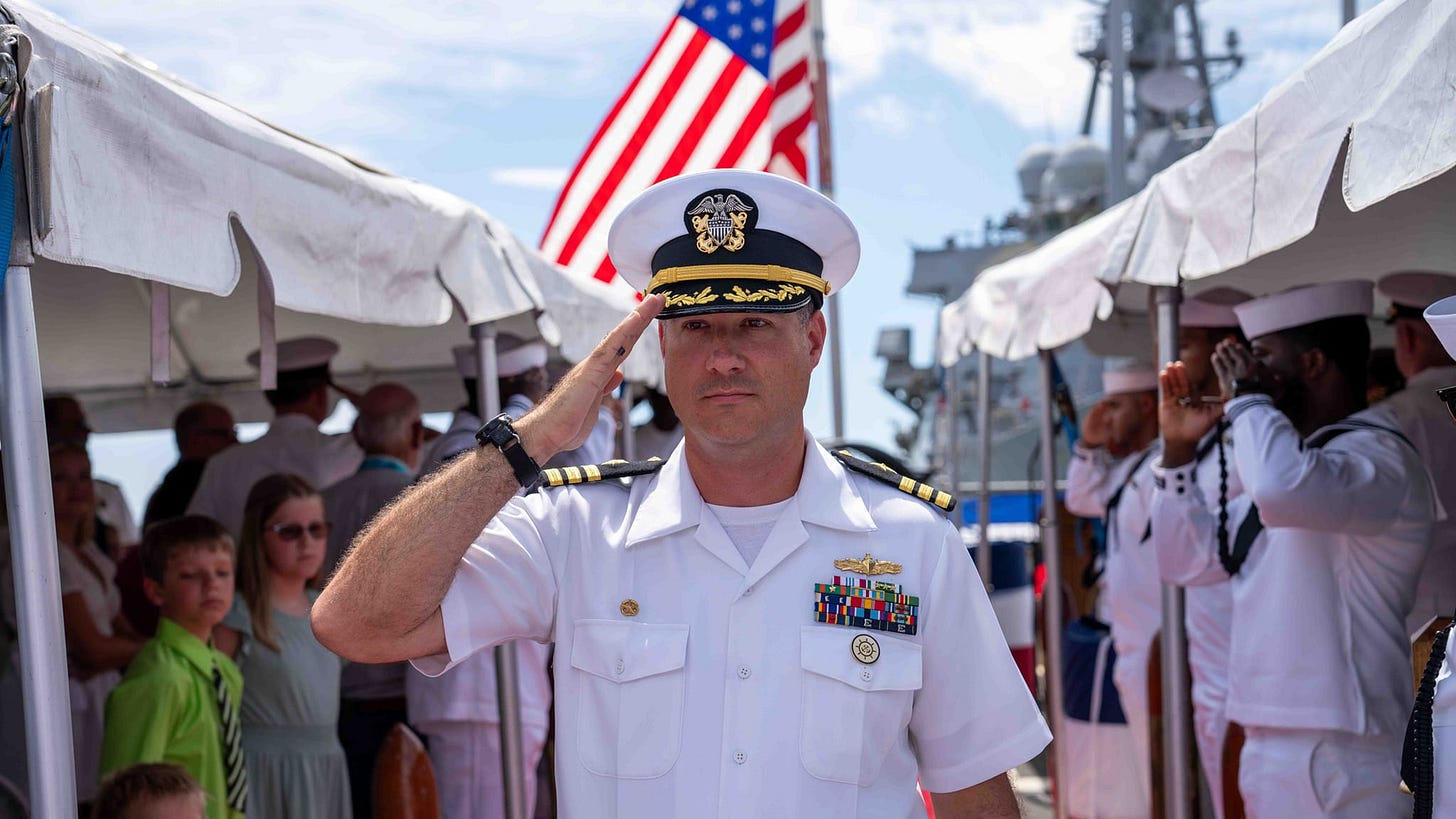
The Sullivans, with Rechkemmer in command, was sent out on its most recent deployment in November 2024, to the Red Sea, with the USS Harry S. Truman strike group.
“We were conducting combat operations in the Red Sea for a number of months” there against the Houthis, Rechkemmer said. “We would go back out into the Mediterranean sometimes to refit, refuel,” and take some port liberties.
“Then we were back in the Red Sea in March and April when all these strikes against the Houthis kicked off. We were there until the current cease fire took effect,” in May.
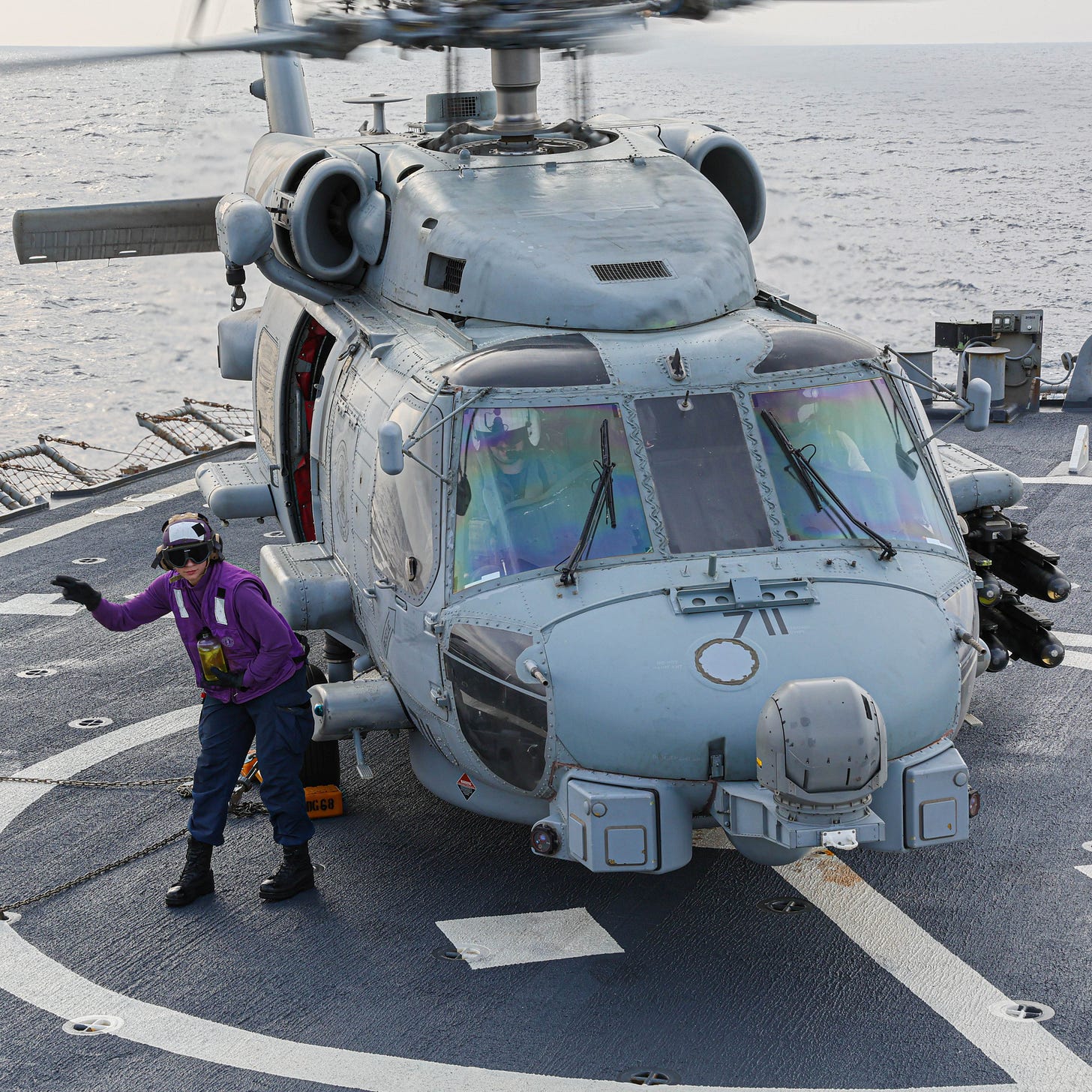
The Sullivans the left the Harry S. Truman strike group, headed into the Mediterranean and linked up with the strike group of the British Royal Navy carrier HMS Prince of Wales, a sister ship to the HMS Queen Elizabeth, working with many of the same British sailors. That strike group also consisted of ships from Norway, Spain, and Canada in addition to the United Kingdom. Also joining the group was The Sullivans’ sister ship from Norfolk, Va, the USS Truxtun (DDG-103)
The Sullivans and other strike group ships then escorted the Prince of Wales through the narrow Bab-el-Mandab Strait from the Red Sea into the Gulf of Aden and the Indian Ocean. “Bab-el-Mandab” is Arabic for “Gate of Tears.” referring to the hazards of navigating it.
“Thankfully, the Houthis abided by cease fire and did not launch any attacks into the strike group,” Rechkemmer said.
After some brief duty with the carrier USS Carl Vinson strike group, “we thought we were going to start heading home,” Rechkemmer said. “We had already been extended from seven months to 8 1/2 months to support the Prince of Wales.
“As we were heading north the threat of Israel attacking Iran became more real,” Rechkemmer said. “Right as we were getting ready to head through the Suez Canal to go back into the Mediterranean again and finally start transiting home, Israel launched their attack. Shortly after coming out of the Suez Canal, within hours, we thought we were going to start heading west,” toward home, but instead, “were directed to head east, and provide ballistic missile defense to Israel against many Iranian threats,” in conjunction with many other ships.
“We were out there for the entire duration of that short-lived conflict,” he said, about 12 days.
“It was a very wild deployment,” Rechkemmer said. “The ship and the crew performed admirably. They engaged every threat that came at us, or that we were directed to engage. The (missile and weapons) systems performed great, the crew did a fantastic job maintaining these systems in a very demanding and challenging environment,” including a high amount of regional dust and sand in addition to normal effects of ocean air and salt water.
“It’s very tough on these systems, especially on this ship, being 28 years old,” Rechkemmer said. “The crew did an absolutely fantastic job maintaining these systems, employing these systems, keeping the ship fully operational for the 8 1/2 months we were out there — not knowing what we were going to experience, what we were going to be threatened with. We were well trained and well prepared, based on lessons learned from previous ships that had been engaging Houthi threats for the past couple of years.
“The crew rose to the occasion every time and performed exquisitely well. I’m very proud of them and very proud of everything they accomplished,” Rechkemmer said.
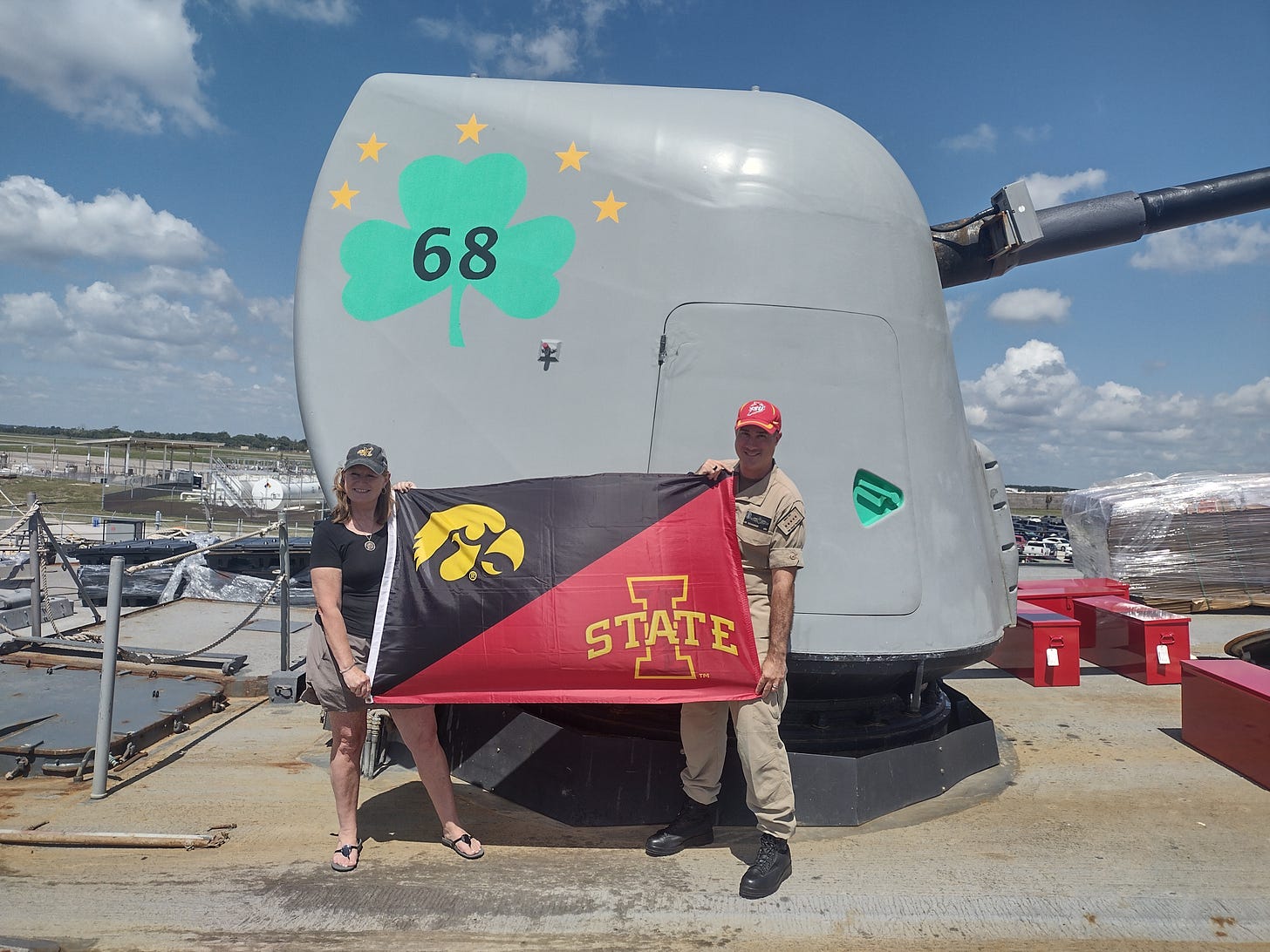
“And to tell the story of how many deployments this ship has been on in the past five years, to cap it all off with this crazy, wild (combat) deployment — the first in this ship’s history,” he said, is astounding. “She’s launched missiles in testing and training before. But all of the missile launches we had on this deployment were the first combat launches in this ship’s 28-year history.”
In addressing those threats as a captain, ship and crew, “you have to take it as it comes,“ Rechkemmer said. “This is my sixth deployment overall. Kind of used to being gone, being away from home and how you cope with that and communicate with family back home. That’s not new for me and my family.
“But this one, I think for everybody — whether it was their first, their sixth their 10th (deployment) — this one, with the knowledge that combat was likely going to happen — and obviously it did — everybody was focused on making sure the ship was absolutely ready, checking and rechecking, and making sure that the people and the systems were ready to employ weapons if called upon to do so.”
With previous deployments, “We had to be ready for the surprise,” he said. With this deployment, combat “was expected from the very beginning — ‘Hey guys, it’s going to happen. We don’t know when. But it’s going to happen.’
“And in this case, it did. On multiple occasions,” Rechkemmer said. “And that really sunk in and the crew really banded together and helped each other.
“With everybody dealing with the stress of being in combat, most of us for the first time, myself included,” he said, “everybody really stuck together. Which is our ship’s motto — ‘We Stick Together.’ “
George, Francis, Joseph, Madison and Albert Sullivan, the sons of Thomas and Alleta Sullivan of Waterloo, died with all but 14 of nearly 700 shipmates after their ship, the cruiser USS Juneau, was torpedoed and sunk by a Japanese submarine on Nov. 13, 1942 following the naval Battle of Guadalcanal. The five brothers’ deaths were the greatest combat-related loss of life by one family at one time in American military history.
A predecessor ship, the destroyer USS The Sullivans DD-537, saw extensive action in World War II and Korea, earning a total of 11 battle stars for its service. It was decommissioned in 1965 and since 1977 has been moored at the Buffalo & Erie County Naval and Military Park in Buffalo, N.Y.
Pat Kinney is a freelance writer and former longtime news staffer with the Waterloo-Cedar Falls Courier and, prior to that, several years at the Ames Tribune. He is currently an oral historian with the Grout Museum District in Waterloo. His “View from the Cedar Valley” column is part of “Iowa Writers Collaborative,” a collection of news and opinion writers from around the state who previously and currently work with a host of Iowa newspapers, news organizations and other publications. They are listed here. Clink on their individual links to check them out, subscribe for free - and, if you believe in the value of quality journalism, support this column and/or any of theirs with a paid subscription. Thank you.


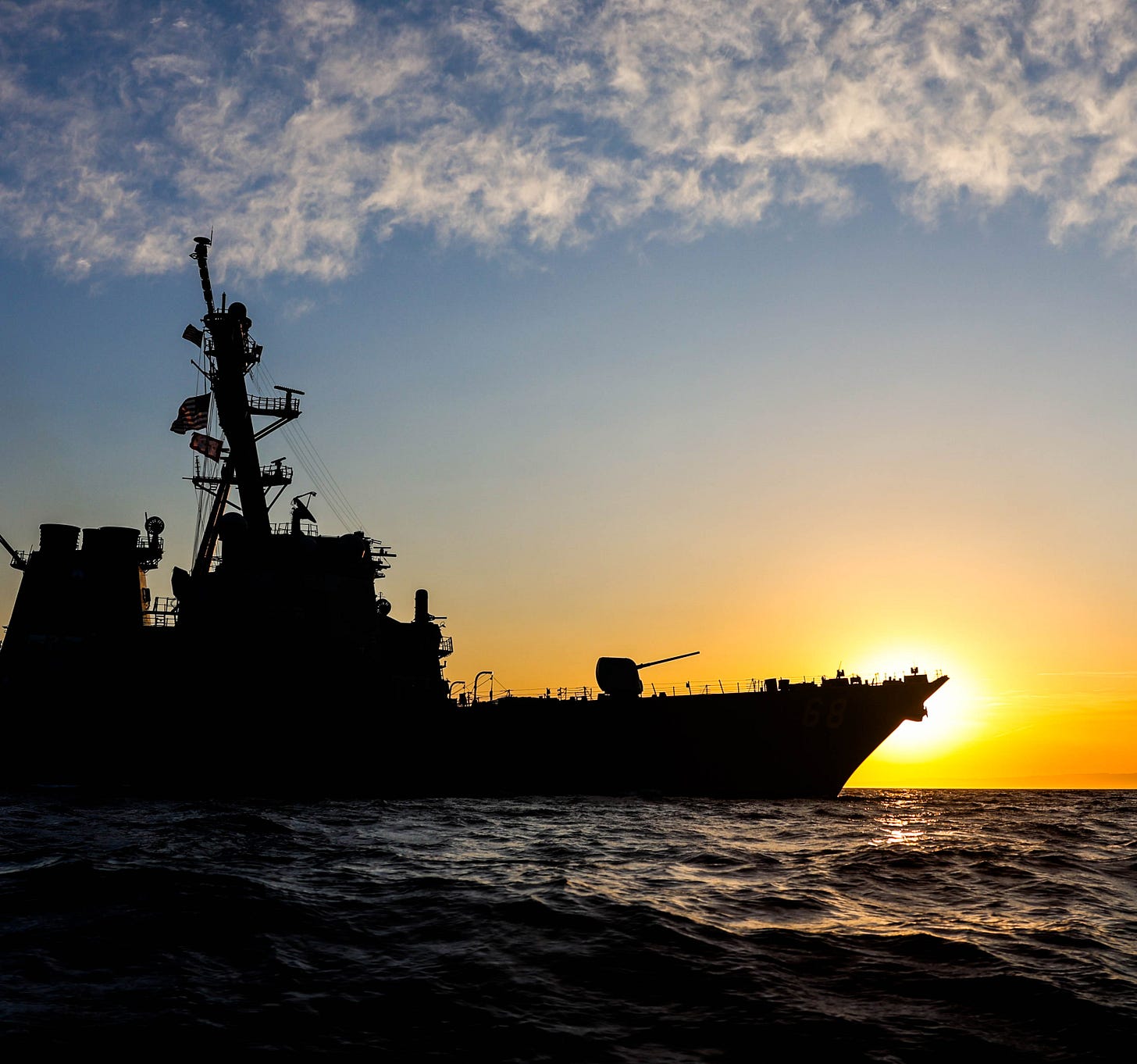
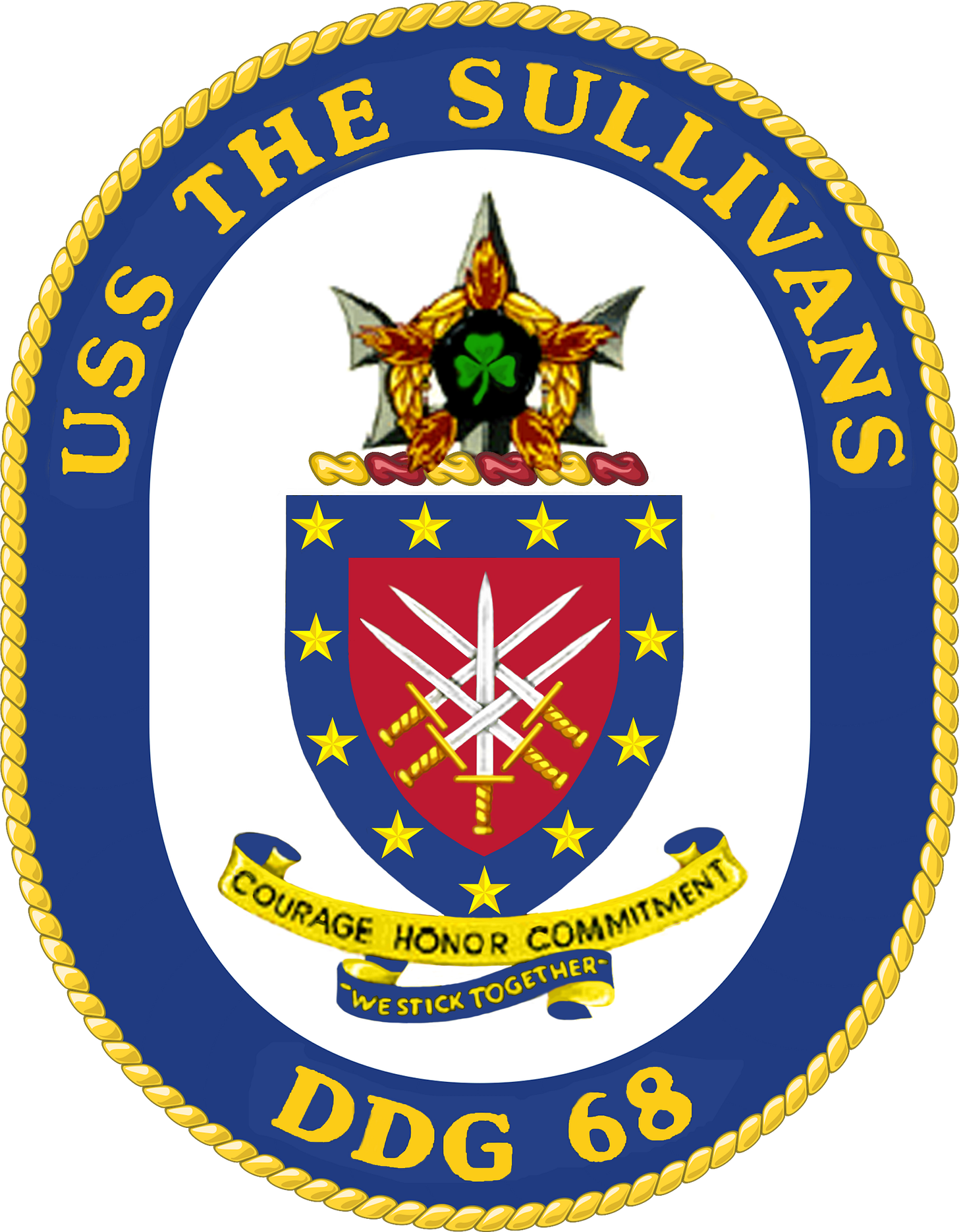
Congrats to the captain and the crew! Iowa is proud of you for helping to keep the world safe. Congrats to your great sponsor, Kelly Sullivan, my mentor. And of course to the author who keeps us up to date on all things connected to the Navy, Waterloo and Iowa.